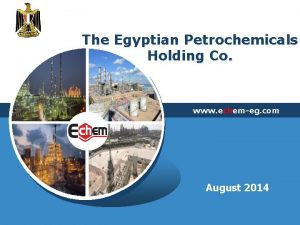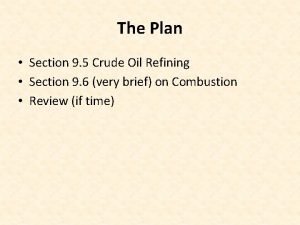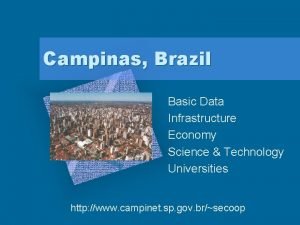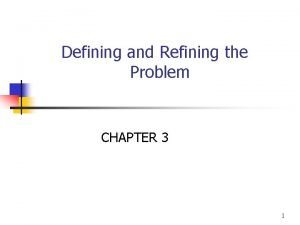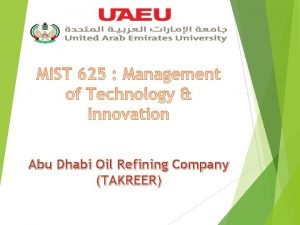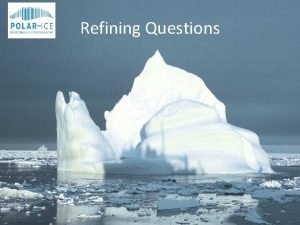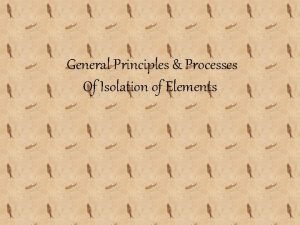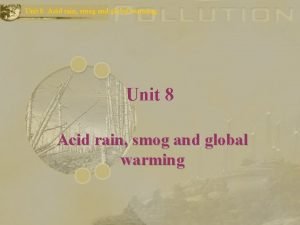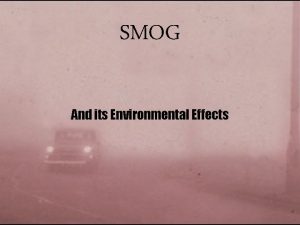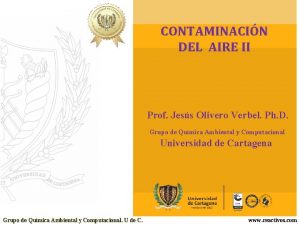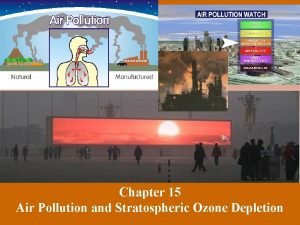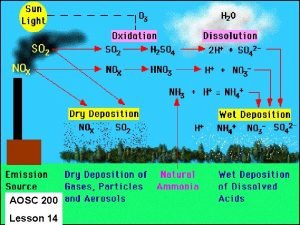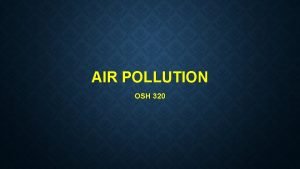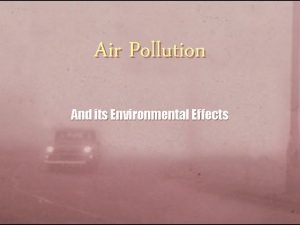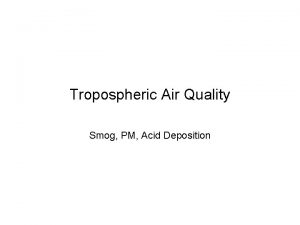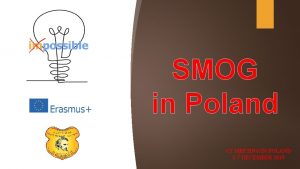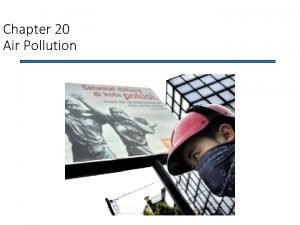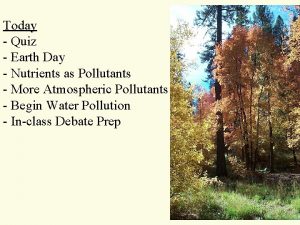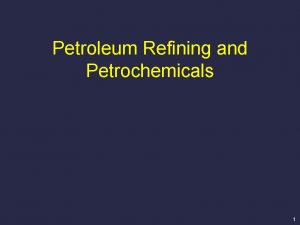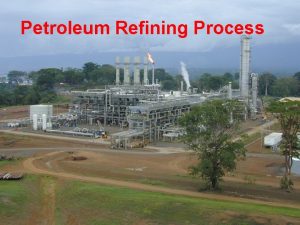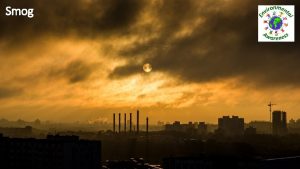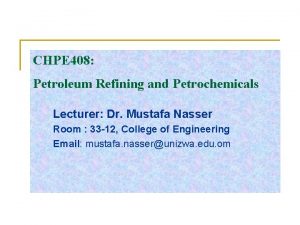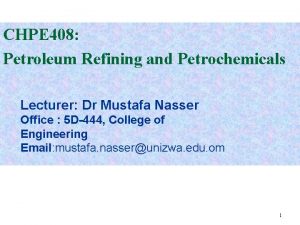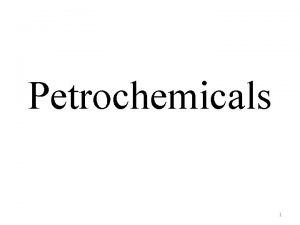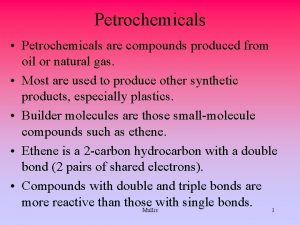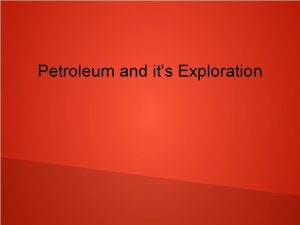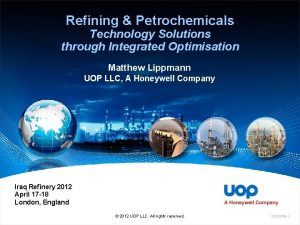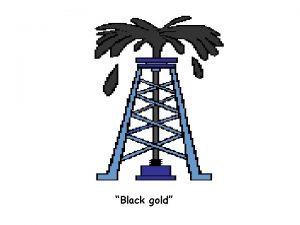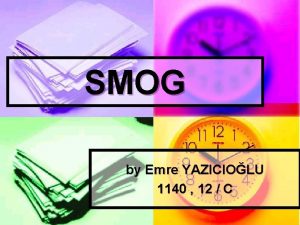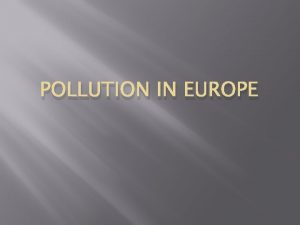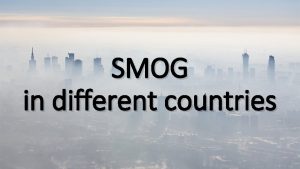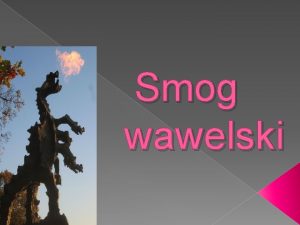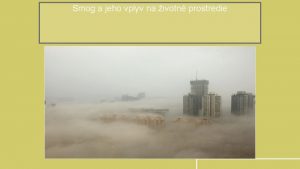Petroleum Refining and Petrochemicals 1 L A smog




















- Slides: 20

Petroleum Refining and Petrochemicals 1

L. A. smog plus invisible GHGs Chief source: combustion of petroleum products 2

Petroleum has been used by humans for millennia, originally for fires and warfare. In the Middle East, oil fields were exploited for naptha, tar, and kerosene in the 8 th to 12 th centuries. These early users depended on seeps (like this modern one), where petroleum rises naturally because of subsurface pressure. Beverly Hillbillies theme 3

The demand for petroleum on the world market grew slowly, but started to take off in the 1800 s. Whale oil was replaced by kerosene lamps starting around 1860. Coal was still the major fuel source in the world until about 1940, when petroleum passed it and became the most valuable commodity in the global marketplace. 4

Petroleum: a thick, flammable, yellow-to-black mixture of solid, liquid, and gaseous hydrocarbons that occurs naturally beneath the Earth's surface. Hydrocarbons: organic compounds consisting of H and C Solids (e. g. paraffin) are not abundant, but have many uses Liquids as g n i s ss Condensate Natural Gas Liquids (NGLs) r te f a ce liqu in g t ple o r d id propane methane butane pentane pr o Crude oil Gases Natural Gas 5

Crude oil (aka “oil”) * Liquid mixture of naturally occurring hydrocarbons * After refining: the chief source of transportation fuels Natural gas ** Gaseous mixture of naturally occurring hydrocarbons After processing: used for power generation, residential, fertilizers, manufacturing, transportation (still very limited) 6

Combustion (burning) of hydrocarbons releases carbon dioxide (CO 2) into the atmosphere In words: Fuel + Oxygen Carbon dioxide + Water + Heat The general equation: Cx. Hy + (x + y/4)O 2 x. CO 2 + (y/2)H 2 O E. g. , for propane: C 3 H 8 + 5 O 2 3 CO 2 + 4 H 2 O 7

8

9

10

11

12

13

Fractional distillation in a refinery very schematic cartoon gases naptha gasoline kerosene L. A. oil refinery diesel lubricants fuel oil residue 14

Natural gas Almost always a mixture of gases; to be used as a fuel, extensive processing is required to produce pure methane. 15

Petrochemicals Chemicals produced from petroleum 16

“Plastics. ” The Graduate 1967 ALL PLASTICS are petrochemicals. 17

polystyrene epoxies 18

polycarbonate, etc. 19

PVC solvents 20
 Egyptian petrochemicals holding company (echem)
Egyptian petrochemicals holding company (echem) Crude oil refining process
Crude oil refining process Petrochemicals
Petrochemicals Cpq petrochemicals industry
Cpq petrochemicals industry Refine the problem
Refine the problem Takreer company
Takreer company Refining discussion techniques
Refining discussion techniques Short note on vapour phase refining
Short note on vapour phase refining How smog is formed
How smog is formed Smog
Smog So2 smog
So2 smog Smog fotoquimico ecuacion quimica
Smog fotoquimico ecuacion quimica How is smog formed
How is smog formed Smog
Smog Smog hog electrostatic precipitators nyc
Smog hog electrostatic precipitators nyc Smog causes
Smog causes Smog
Smog Smog
Smog Two sources of air pollution
Two sources of air pollution Sources of smog
Sources of smog Earth day quiz
Earth day quiz
